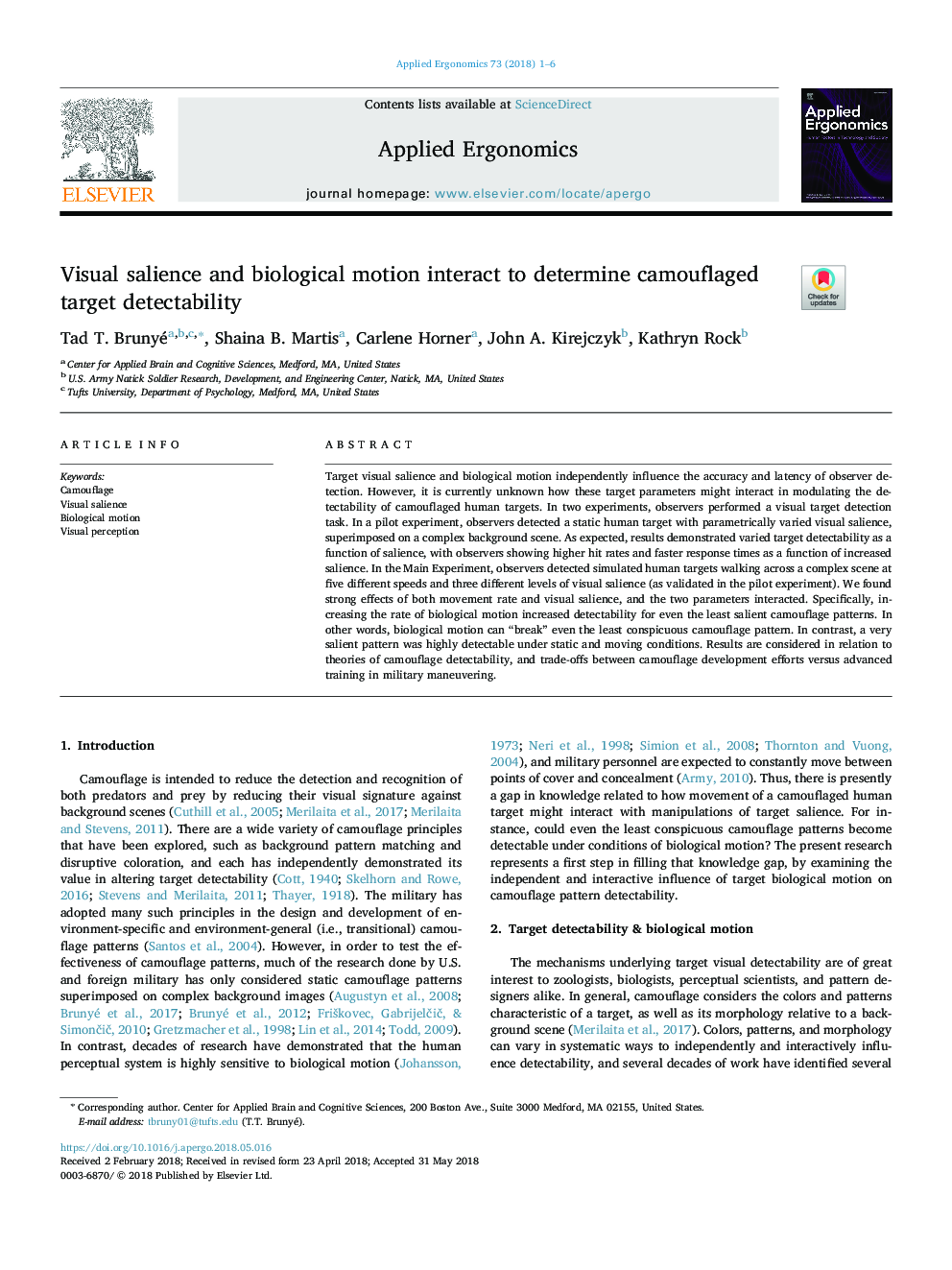| Article ID | Journal | Published Year | Pages | File Type |
|---|---|---|---|---|
| 6947538 | Applied Ergonomics | 2018 | 6 Pages |
Abstract
Target visual salience and biological motion independently influence the accuracy and latency of observer detection. However, it is currently unknown how these target parameters might interact in modulating the detectability of camouflaged human targets. In two experiments, observers performed a visual target detection task. In a pilot experiment, observers detected a static human target with parametrically varied visual salience, superimposed on a complex background scene. As expected, results demonstrated varied target detectability as a function of salience, with observers showing higher hit rates and faster response times as a function of increased salience. In the Main Experiment, observers detected simulated human targets walking across a complex scene at five different speeds and three different levels of visual salience (as validated in the pilot experiment). We found strong effects of both movement rate and visual salience, and the two parameters interacted. Specifically, increasing the rate of biological motion increased detectability for even the least salient camouflage patterns. In other words, biological motion can “break” even the least conspicuous camouflage pattern. In contrast, a very salient pattern was highly detectable under static and moving conditions. Results are considered in relation to theories of camouflage detectability, and trade-offs between camouflage development efforts versus advanced training in military maneuvering.
Related Topics
Physical Sciences and Engineering
Computer Science
Human-Computer Interaction
Authors
Tad T. Brunyé, Shaina B. Martis, Carlene Horner, John A. Kirejczyk, Kathryn Rock,
